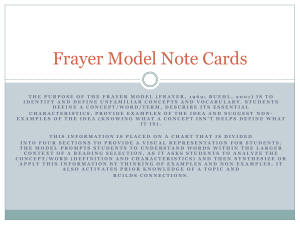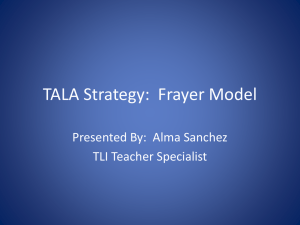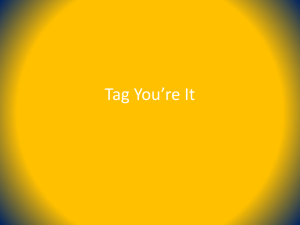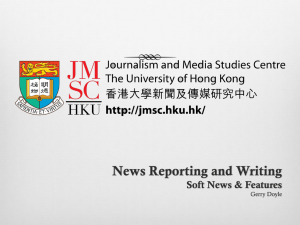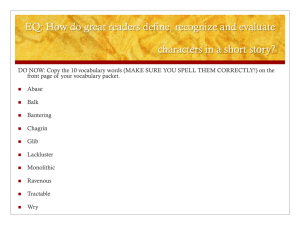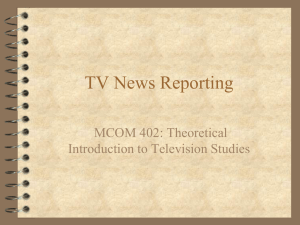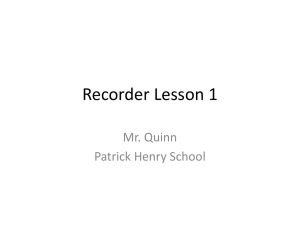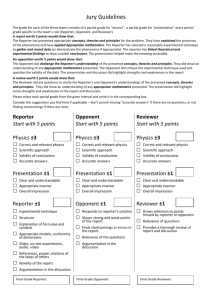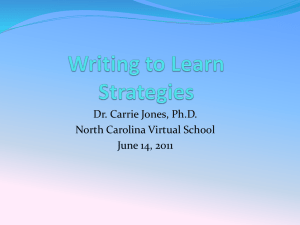Literacy: Improving Reading Comprehension in Chemistry
advertisement
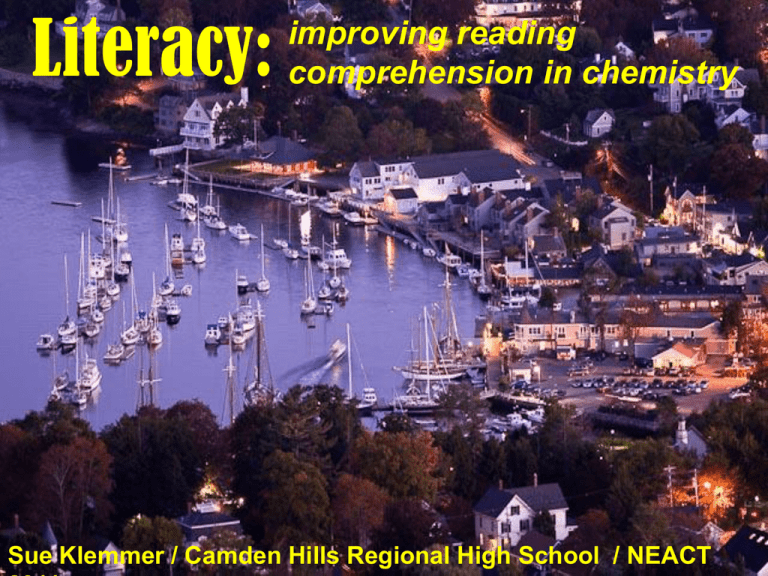
Literacy: improving reading comprehension in chemistry Sue Klemmer / Camden Hills Regional High School / NEACT Norms • minimize side talk • get up whenever! • ask questions any In the next 90 minutes ... What is “literacy” and how do we know when we’ve got there? 6 specific tools for improving reading comprehension skills What does this look like in the classroom? 1. Do you have clear expectations of what you want students to be able to do? 1. Do the students know what your expectations are? What is it? •What does it mean to be “scientifically literate”? •What are the hallmarks of a student with “excellent reading skills” in chemistry? 1. Pick a “recorder” and “reporter.” 2. One by one (“roundrobin”) introduce yourself and share what it means to be scientifically literate, as recorder jots down ideas. 3. Do a 2nd round on what excellent reading skills look like. 4. Look over your lists and find “bright ideas” to share with the rest of us. 5. Your reporter will speak for you. Lexile Scores score = 1210L Jane Doe’s score is 1150 • anything rated above 1150+50 = 1200 she’s likely to have trouble reading independently • anything below 1150-100 = 1050 she’ll likely find very easy CC grades 11-12 CC grades 9-10 # students < 1160 = 8/79 = 10% likely to find Zumdahl text difficult (rated 1210) # students <1230 = 16/79 = 20% likely to find Creations of Fire text difficult (rated 1280) get Lexiles at www.lexile.com Time = Effort? Difficulty? 1. NEVER “reading for reading sake”: always in support of teaching science. 1. These strategies must be explicitly taught and practiced. What do you do? •Make a list of the types of strategies you use when you read PD content. •What factors influence you to pick one strategy over another? 1. Change“recorder” and “reporter.” 2. Create a tally list of all the strategies used by the group 3. Be prepared to share the most common strategies. 4. Do a 2nd list of influencing factors. 5. What do you notice about this list? 6. Your reporter will speak for you. Concept Maps • asks students to understand RELATIONSHIPS rather than DEFINITIONS • important to have labeled links that create “concept-link-concept” sentences one of the more time-consuming strategies to teach very powerful in tandem with other strategies can be very helpful to teachers in spotting misconceptions See me Wednesday for more! Sample Map #1 What do you notice? #2 Survey Says ... 68% 58% Highlighting electronic vs. paper have a purpose! if the PURPOSE is mastering content, try … “red/green” for main points and confusion “circles/lines” for key vocabulary & definitions/examples if the PURPOSE is reading research, try … “bold/underline” for claim vs. evidence “box it” to identify parts like procedure, etc. if the PURPOSE is review or application, try … “underline/star” for all the places where the author talks about what they already know vs. new examples or applications Highlighting Assignment The goal of reading this article is to understand THINK-PAIR-SHARE the difference between Do it. (5 min!) accuracy and precision. Pair up: (3 min!) Use one color of • Discuss the differences highlighter to mark all in your choices. direct references to • How is this different than accuracy, and another one-color highlighting? to mark direct Be prepared to share references to precision. something enlightening Remember: BE that your partner said. STINGY! Know-Learn-Want • KNOW: list 3 things you know about the topic before reading • LEARN: list 3 things you learn from the reading • WANT: list 3 things you now want to know about this topic actively engages what students already know “hooks” their curiosity can students find the main idea? also useful as a “probe” for understanding (don’t teach what they already know; spot misconceptions) ✘ not good for dry text ✘ not good if you want students to know details Anticipation-Reaction Guide • consists of about 6 true/false statements • some “low Bloom” level statements (clear answer in the text) • some “high Bloom” level statements (infer or synthesize from text) actively engages what students already know a highly structured strategy useful for difficult text, to help find key points requires more prep on part of the teacher Ant.-React. Assignment Follow the directions on the “AnticipationReaction” worksheet. THINK-TEAM-SHARE Do it. (7 min!) In your teams: (5 min!) • Pick a new reporter and a new recorder. • Share your answers to each question. If there is disagreement, come to consensus. • Which questions are higher on “Bloom’s”? Be prepared to share your insights. Frayer Squares F-squares ask students to think comprehensively about multiple aspects of the same topic this is a good choice for detailed readings there are multiple versions of F-squares; you can tailor the “corners” to suit Blank Square Frayer cautionary tale – keeping the purpose in mind! observable world atomic world mathematical world One of my “lenses’ for chemistry is the “three worlds” idea. I thought about redesigning the corner of the F-sq. ... meet two goals at once! BUT: My texts aren’t organized this way ... so it would not help students’ reading comprehension. Frayer Square Assignment In May, my students read ROUND ROBIN sections in 2 different chapters Do the assignment on your of our text – one on acid own. (3 min!) nomenclature and the other on In your team: (5 min) the nature of acids & bases. • Go one round with “I They could takes notes in any noticed ...”. If you noticed format. something similar to Here are 2 samples from someone else, paraphrase students who chose to use her first and then add your Frayer squares. comment. o What do you notice about • Share your warm & cool their reading skills? feedback for each student. o Write a “warm” red and “cool” Be prepared to share blue sticky note feedback to something that “resonated.” each student. Survey Says ... 54% 39% Survey Says ... 65% 45% Annotated Sample Problems • • goal: have students actively read sample problems in their textbook goal: students will focus on the process, rather than memorizing “plug ‘n chug” This is very much a “work in progress”. ✘Columns always seem to be wrong size. ✘Many students find it awkward. Current Annotation Survey Says ... 65% 56% Future Annotation work backwards! With Math & Science Teachers • Survey expectations for “shown work” on tests. • Identify common elements and unique needs. • Develop a “learning progression” of expectations Then: Redesign “annotation” form to meet dual goals of better reading comprehension and performance expectations. Creative Annotation 1. Independent readers analyze & reflect upon their own capabilities. 1. These skills develop more efficiently with teacher assistance. Building Metacognition SURVEYS can be useful for you and your students. •How much time do you spend taking notes? •Is strategy “x” helpful? easy? does it change the way you read? PEER REFLECTION is a powerful tool and saves teacher time! • “think-pair-share”: do it on our own, then share what you’ve done with a partner, then pairs share best elements of each other’s work with another pair or the class • “warm-cool” feedback: using 2 different colors of sticky notes, provide a specific comment on something done well (warm) and a constructive comment on something that could be improved (cool) • “ask and receive”: each partner completes an index card “I’d especially like feedback on …” and gives it with work to partner for coaching EXIT SLIPS ask students to reflect on and communicate their understanding of content and/or confidence level with skills. Survey Says ... Resources

